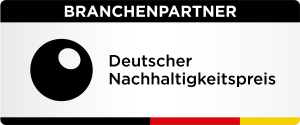
bofest consult ist offizieller Branchenpartner und Fachjurymitglied beim Deutschen Nachhaltigkeitspreis 2024
Die bofest consult GmbH freut sich, bekannt zu geben, die Fachjury des diesjährigen Deutschen Nachhaltigkeitspreises zu verstärken. Dr. Dana Yma Faulenbach, Geschäftsführerin der bofest consult, wird bei der Bewertung der Branchenkategorien Energieerzeugung & –handel, Energiespeicherung & -verteilung sowie Wasserversorgung auf Ihre Expertise und langjährige Erfahrung zurückgreifen.
Als anerkannter Branchenpartner des Deutschen Nachhaltigkeitspreises sieht die bofest consult die Möglichkeit, ihr Fachwissen zu multiplizieren, innovative Lösungen für eine nachhaltige Zukunft zu fördern und den Dialog über nachhaltiges Wirtschaften voranzutreiben. Diese Partnerschaft stellt einen bedeutenden Schritt im Bestreben des Unternehmens dar, sich aktiv für Nachhaltigkeit einzusetzen und die Transformation hin zu einer zukunftsfähigen Wirtschaft zu unterstützen.
Der Deutsche Nachhaltigkeitspreis, der in diesem Jahr bereits zum 17. Mal vergeben wird, gilt als eine der renommiertesten Auszeichnungen im Bereich der Nachhaltigkeit und setzt branchenübergreifend Maßstäbe für ökologisches und soziales Engagement.
Die bofest consult GmbH fühlt sich geehrt, Teil dieses inspirierenden Netzwerks zu sein und freut sich auf eine erfolgreiche Zusammenarbeit mit dem Deutschen Nachhaltigkeitspreis und seinen Partnern, um gemeinsam eine nachhaltige Zukunft zu gestalten.
